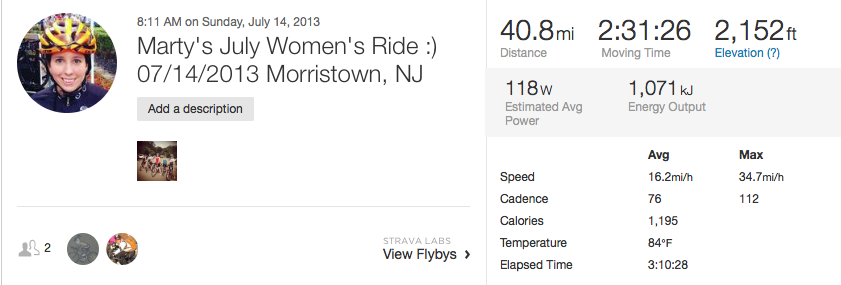Since it looks like we still have a few cold and snowy days left at the tail end of this winter I wanted to talk about focusing on increasing your average cadence, especially when working out on the trainer. Up until a few years ago my average cadence on a ride was always a bit too low. I was pushing too big of a gear which was inefficient and probably would have lead me to injury. On longer rides sometime my legs would cramp and fatigue and I didn’t know why.
Your ideal cadence should be around 90 revolutions per minute.
Eventually when I started to work with a cycling coach he pointed out my slow cadence and started to have me work on improving that part of my technique. Ideally your cadence should average around 90 RPMs but mine was always closer to the 75-80 RPM range. At first it felt strange to be pushing an easier gear with a higher cadence, but the more I focused on it the more natural feeling it became. Now I am at the point where if my cadence is 75 or 76 over the course of a ride that slower leg speed feels unnatural to me.

One of my ride files from a few years ago with an average cadence of 76 RPMs
What is the physiological reason that a higher cadence is more desirable?
When you are mashing a big gear your body is engaging more of your fast twitch muscle fibers which are fueled by glycogen, a limited resource in your body. When your legs are moving at a faster cadence with a lighter gear you are engaging more slow twitch muscle fibers which are fueled by fat of which your body has a much greater supply. These slow twitch fibers are also more resistant to fatigue than their fast twitch counterparts, therefore allowing you to go hard and fast for a greater length of time before you fatigue.
Some drills you can add to your workouts to help increase your cadence.
When you are on the trainer, it is a good time to focus on increasing your cadence. Again you don’t have the same distractions you have on the road and can really just work on bringing up your leg speed. When you are doing a harder interval, consider trying to just pick up your cadence to increase your intensity or maybe just increase by one gear and either try to keep your cadence the same or pick it up just a little bit. In the long run you will find that this is more efficient.
Here are a couple of drills you can add to your trainer workout to help with increasing your cadence.
- Alternate between one minute at 85-90 RPMs and then one minute at 100+ RPMs, do this for ten minutes, take a five-minute rest and then do the alternations again.
- Once you are pushing at 100+ RPMs it will start to make 90 feel more natural.
- Push for two minutes at around 100 RPMs, take a one-minute break and then repeat four to five times.
- Again forcing your legs to work at a much higher cadence will start to change your muscles and muscle memory, getting those muscles used to turning the legs at a higher rate of speed with less gearing and more efficiency.
You want to try to become as strong and efficient as you can in that 90 RPM range to really get the maximum benefit from your cycling. If you don’t have a cadence sensor on your bike it is definitely a worthwhile investment, to help you to monitor your training efficiency. So if you find yourself stuck on the trainer this upcoming weekend, think about throwing a few cadence drills into your workout. Increasing your leg speed and improving your form will pay off throughout the upcoming season and throughout your entire cycling career.